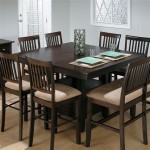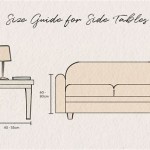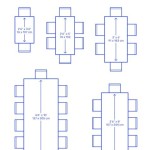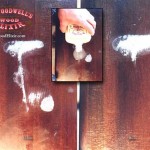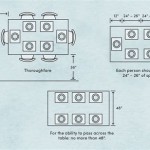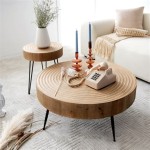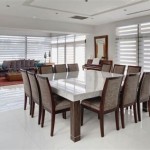How Much Space is Needed For Table Tennis?
Table tennis, also known as ping-pong, is a popular sport enjoyed by people of all ages and skill levels. While the equipment needed – a table, paddles, and a ball – is relatively modest, the space required to play comfortably and effectively is often underestimated. Understanding the spatial requirements for table tennis is crucial, whether planning a dedicated game room, setting up a temporary recreational area, or considering the feasibility of installing a table in an existing space. Insufficient space can significantly hinder gameplay, limit movement, and ultimately detract from the overall enjoyment of the sport.
The official dimensions of a table tennis table are standardized for competitive play. The table measures 9 feet (2.74 meters) in length, 5 feet (1.525 meters) in width, and 2.5 feet (76 cm) in height from the playing surface. However, these dimensions only represent the minimal area occupied by the table itself. To allow for comfortable movement and unrestricted play, a considerably larger space is necessary.
The minimum recommended space for recreational table tennis is often cited as 17 feet (5.18 meters) in length and 11 feet (3.35 meters) in width. This allows players to move freely to hit the ball without feeling cramped. However, this is a bare minimum, and more space is always preferable, especially for players with higher skill levels or those looking to improve their game. Players should consider the level of play and the potential for future skill development when determining their spatial needs.
This article explores the various factors influencing the optimal space requirements for table tennis, examining the trade-offs between minimum usable space and ideal play environments. It will also address the impact of skill level, playing style, and surrounding obstacles on the overall spatial needs for a satisfying table tennis experience.
Key Point 1: The Impact of Player Skill Level and Playing Style
The skill level of the players significantly impacts the amount of space required for comfortable and effective gameplay. Beginners often require less space, as their shots tend to be less powerful and stay closer to the table. Their movements are typically less expansive, and they are less likely to chase after wide shots that stray far from the table surface.
Intermediate players, on the other hand, generally need more space. They are more likely to use a wider range of shots, including those that require them to move further back from the table. Their footwork becomes more refined, and they develop the ability to generate more power and spin, leading to balls traveling further and faster. The increased speed and trajectory of the ball often necessitate more space to react and return the shot effectively.
Advanced players, especially those engaging in competitive play, require the most space. Their game often involves aggressive serves, powerful smashes, and complex spin variations. They need ample room to move freely around the table, anticipating their opponent's shots and positioning themselves for optimal returns. They also need space to execute powerful backhands and forehands, which often involve significant body rotation and large sweeping motions. A cramped environment can severely restrict their movement and hinder their ability to perform at their best.
Playing style also plays a role. Defensive players, who tend to play further back from the table, need more room to retrieve deep shots and execute long rallies. Offensive players, who prefer to stay close to the table and attack aggressively, may require less space behind the table but more space on the sides to move laterally and angle their shots. These differences in playing style should be considered when determining the appropriate space allocation.
Furthermore, considering the number of players is crucial. Single play requires less space for movement compared to double play. In double play, four players need to move and communicate effectively, which further emphasizes the need for sufficient sideways space.
Key Point 2: Considerations for Surrounding Obstacles and Safety
The presence of surrounding obstacles, such as walls, furniture, and other equipment, can significantly impact the usability of the table tennis space. Close proximity to walls can limit movement and create a feeling of confinement, hindering a player's ability to fully extend their reach and perform certain shots. It can also pose a safety hazard, as players may collide with walls or furniture while chasing after the ball.
Ideally, there should be a minimum of 4 feet of clear space behind each end of the table and at least 3 feet of clear space on each side. This allows players to move freely without bumping into obstacles. However, more space is always preferable, especially for higher-level players or those with a more aggressive playing style. In situations with space constraints, it is advisable to pad the walls surrounding the playing area, especially at the height of the table.
Lighting is another critical consideration. Proper lighting is essential for clear visibility and accurate shot placement. The lighting should be bright and evenly distributed, without creating glare or shadows that can obscure the path of the ball. Overhead lighting is generally preferable, but supplemental lighting may be necessary to ensure adequate illumination in all areas of the playing space. Shadows can disrupt gameplay by hindering the ability to accurately judge the ball’s trajectory and speed.
The flooring material should also be considered. A non-slip surface is essential to prevent accidents and ensure stable footing. Hardwood floors, rubber mats, or specialized sports flooring are all suitable options. Carpeted surfaces are generally not recommended, as they can impede movement and make it difficult to track the ball's bounce. Uneven flooring is another issue that could affect the bounce of the ball.
Safety considerations extend beyond the immediate playing area. Adequate ventilation is important to prevent overheating and ensure a comfortable playing environment. The temperature should be kept at a reasonable level, and humidity should be controlled to prevent the table from warping. First-aid kits should be on readily accessible in case of any accidental injury.
Key Point 3: Optimizing Space in Limited Environments
In situations where space is limited, careful planning and creative solutions are essential to maximize the usability of the table tennis area. Folding tables can be a viable option for those with limited space. These tables can be easily folded up and stored away when not in use, freeing up valuable floor space for other activities. However, it is important to choose a high-quality folding table that is sturdy and provides a consistent playing surface. The stability of the table is crucial for maintaining fair and accurate gameplay.
Another strategy is to repurpose existing rooms or spaces for table tennis. A garage, basement, or spare bedroom can be transformed into a functional playing area with some careful planning. Removing unnecessary furniture and decluttering the space can create more room for movement. Using mirrors on the walls can also create the illusion of more space and improve visibility.
Creative storage solutions can also help to optimize space. Wall-mounted shelves or cabinets can be used to store paddles, balls, and other equipment, keeping them out of the way and preventing clutter. Using vertical space can be an effective way to maximize storage in a small area. Consider using mobile storage units for ease of relocation.
When working with a limited space, it is even more important to choose the right table. Consider a smaller or mid-sized table to fit the available space. These tables may not meet official tournament specifications, but they can still provide a fun and engaging playing experience. Select a table with good balance and stability to ensure safety and consistency during play.
Finally, consider adjusting the playing style to suit the available space. Focusing on closer-to-the-table play and minimizing excessive backswing can help to reduce the need for extensive movement. Adapting the game to the environment can make table tennis enjoyable even in confined spaces. Another consideration is to use slower balls to provide more reaction time and reduce the amount of space needed to return shots.
Table Tennis Clearances Dimensions Drawings Com

Room Size For Table Tennis Playeronsite

Table Tennis Room Size Home Space Guide Racket Insight

Table Tennis Buyer S Guide Liberty Games

To Choose The Right Table Tennis Size For You Stiga Sports

How Much Room Space Size Do I Need For A Table Tennis
To Choose The Right Table Tennis Size For You Stiga Sports

Table Tennis Standard Dimensions Free Dwg Layakarchitect

How Much Space Do You Need For A Table Tennis Heemskerk Play It

Table Layouts For Tennis Club

